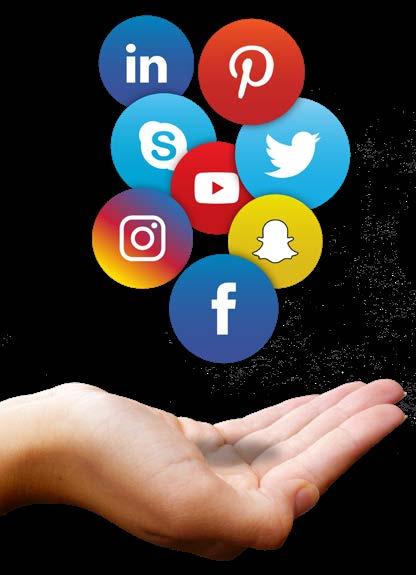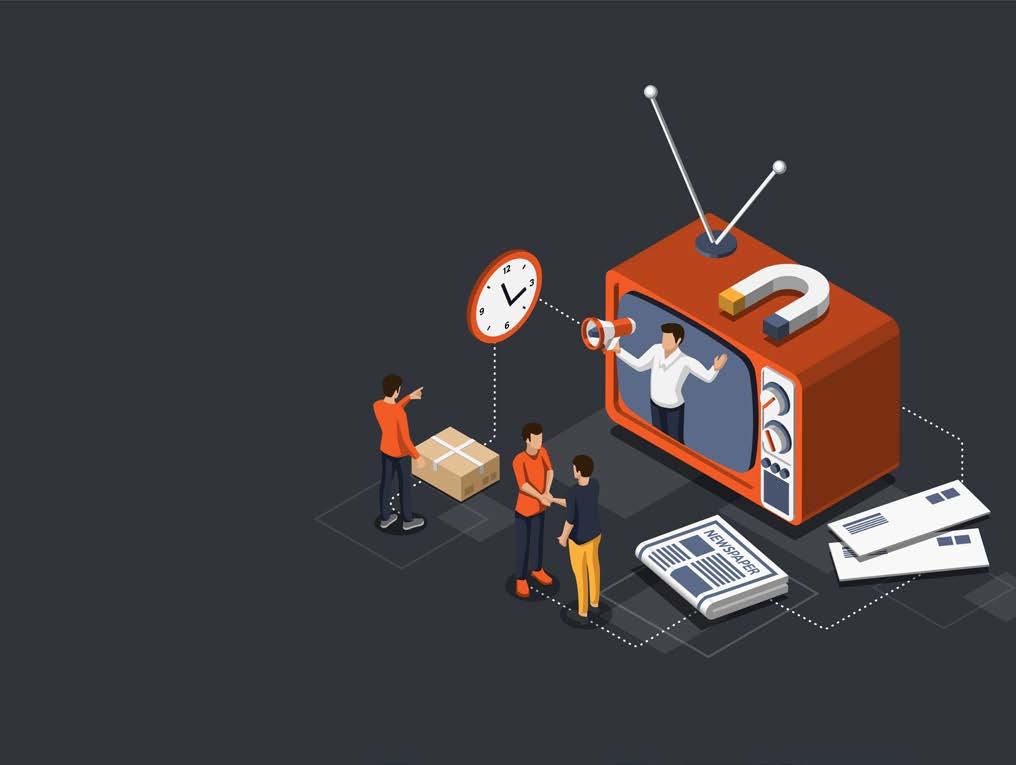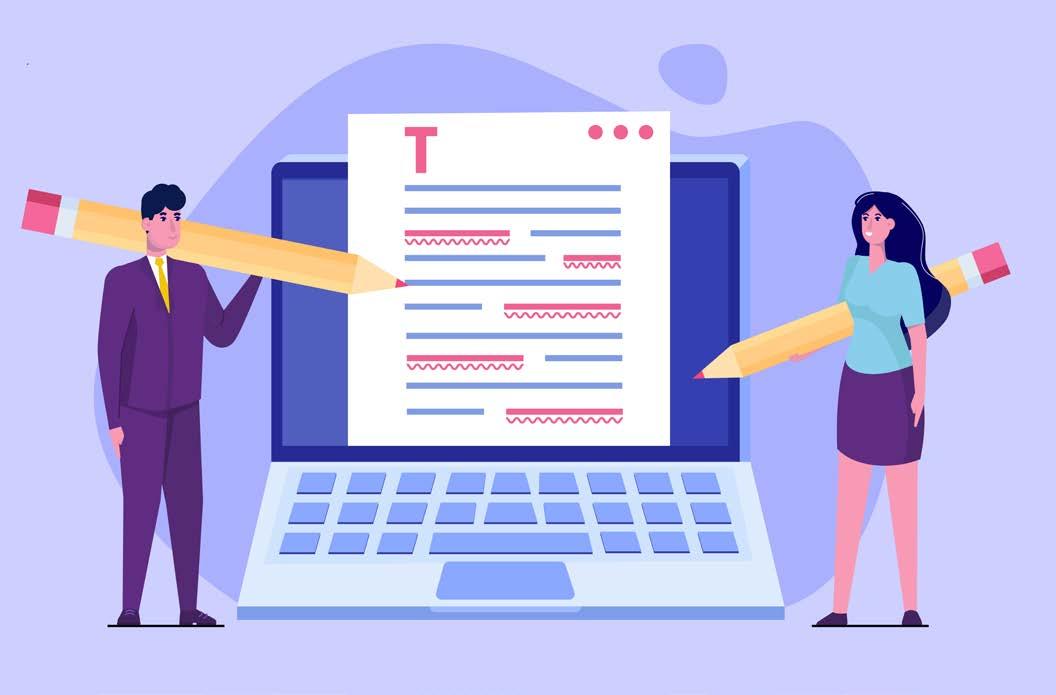
8 minute read
Tips All Working Women need for
off big-time when you create quality videos with valuable information in them!
Six: Make Sure Your Website Loads Quickly
One of the biggest complaints customers have about websites is that they load too slowly. If your website takes forever to load, people will get impatient and leave. Your site should load in less than three seconds.
To speed up your website, try optimizing your content and evaluating your plugins. Website plugins are known to weigh websites down, as are oversized images.
Seven: Include Clear and Concise Calls to Action
Your website should include clear calls to action that encourage customers to take the next step. When a customer visits your site, you want them to know exactly what they need to do in order to find out more about your company or make a purchase from you. If people aren’t sure how to proceed, they’ll leave and go elsewhere for answers.
Eight: Keep Your Website Current
One of the best ways to keep customers coming back is by keeping your website current. That means regularly updating your content, redesigning your layout, and adding new features.
If you don’t update your website often, people will get bored and go somewhere else. Show that you’re an active business with a vested interest in providing quality information by making sure your website is always fresh and up to date.

Nine: Test Your Website on Different Browsers and Devices same browser or device, so it’s important to test your website on a variety of different browsers and devices. This way, you can make sure that your website looks great and functions properly on all of them.
You don’t want customers coming to your site only to have it look completely different or not work at all because they’re using a different browser than you expected.
Ten: Use Professional Web Design Services
If you’re not confident in your ability to design and maintain a quality website, consider hiring a professional web design service. These companies have experts who know how to create an effective site that’s easy for customers to navigate.
Eleven: Listen to Customer Feedback
Your customers are the best source of information about what does or doesn’t work on your website. Listen to their feedback and make changes accordingly. They’ll appreciate it!

Twelve: Add Social Media Buttons
People love sharing things online when they find an article or video interesting enough, so give them the opportunity to do so by adding social media buttons to your website. This will help spread the word about your company and increase traffic to your site.
Thirteen: Use SEO Tactics
Search engine optimization, or SEO, is the art and science of improving the ranking of your website on search engines like Google. By using effective SEO tactics, you can ensure that more people will see your website when they’re searching for information related to what you offer.
Fourteen: Make it Easy for Customers to Contact You
One of the best ways to improve customer satisfaction is by making it easy for customers to contact you. Include prominently placed contact information on every page of your website, as well as an easyto-use contact form. Make sure you have a system in place to quickly respond to customer inquiries so that they feel valued and appreciated.
Fifteen: Use Live Chat Support Another way to make it easy for customers to contact you is by using live chat support. This allows customers to communicate with a representative from your company in real-time, which can be helpful for resolving any issues they may have. Offering live chat support can also help increase customer satisfaction and loyalty.
By following these tips, you can create a website
that provides a great customer experience. Keep in mind that it’s always important to listen to feedback from your customers and make changes accordingly. Use these tips as a starting point and tweak them to fit the needs of your business.
When designing your website, keep in mind how you want customers to feel when they visit. You want them to be excited about what they see, so use prominent colors like reds, oranges, and yellows on buttons throughout the site. It’s also important to keep your website current by regularly updating content, redesigning layouts, and adding new features. Don’t forget that people are more likely to spend time on a website if it feels like home. As such, make sure there’s plenty of white space around text blocks and images, so they’re easy for visitors to read or view without being overwhelmed by clutter. If you follow these tips, your website will provide an excellent customer experience! Just remember, it’s all about the details.


Traditional Marketing vs. Content Marketing: Is One Better Than the Other?
Traditional marketing has been around for decades, and many businesses still practice this form of advertising and promotion. The traditional marketing approach involves print media, direct mailings, radio ads, and TV spots. However, with the rise of technology, content marketing has become increasingly popular among both small entrepreneurs and large corporations alike as it’s cost-effective to create highquality content with little more than time and effort.
Advantages of traditional marketing
Traditional marketing can be a fantastic method to generate leads for a business. It involves creating ads that will be consumed by potential prospects, attracting them to a compelling offer.
One of the main benefits of traditional marketing is that it’s a very efficient way to reach a lot of people. You can place your ad in front of millions of potential customers.
Another benefit of traditional marketing is that it allows you to target your audience very specifically. You can target people based on location, age, gender, interests, and more. This allows you to reach the right people with your message, which increases your chances of generating leads from those people.
Pitfalls of traditional marketing
One of the main disadvantages of traditional marketing is that it is not as flexible as newer forms of communication. For example, you may have to create your message weeks or months before an ad runs. Even daily newspaper ads may require a lead time of several days. Changing broadcast ads requires time and additional production expenses. Yet, a business can change Facebook pages, send tweets, or update a website in a matter of minutes.
Another drawback of traditional marketing is that it is difficult to track the success of an ad campaign. Print and broadcast outlets provide media kits with audience demographics, but once a magazine is delivered, a paper is printed, or a radio spot is aired, there is no way to know for sure who read, heard, or saw your ad. This can make it difficult to determine whether the campaign was successful.
While traditional advertising is still popular, it can be quite expensive. To buy TV spots, you’ll need to commit to spending thousands of dollars. And that’s just for the airtime -- you’ll also need to pay for the development of your commercial. Radio ads can be less expensive, but they usually don’t have the reach of TV spots. Print ads are the cheapest option, but they also have the lowest reach. Advantages of content marketing Content marketing can help businesses build trust with a specific audience. By creating and sharing valuable content, businesses can connect with prospects and drive traffic to their site. Additionally, content marketing is cost-effective, as it requires minimal investment and can be executed through various channels. While some companies choose to hire content creators, producing quality content consistently only requires some time and effort. Content marketing can help a business be found on search engines. Creating keywordoptimized blog posts and videos will draw attention from search platforms like Google and Yahoo, which leads to higher page rankings when a prospect searches for a solution to a problem. Drawbacks of content marketing While content marketing is a wonderful way to attract
new customers and boost your business, it does have some drawbacks. Probably the biggest disadvantage is that it takes time to see results. Businesses often are not willing to invest the time needed for a successful content marketing strategy and give up before it brings any significant website traffic gains. It can be difficult to keep your content marketing strategy fresh and unique, especially with any real experience creating content. Without new ideas injected into a content marketing strategy, visitors will lose interest quickly and forget about your company.
A business must develop a good search engine optimization (SEO) strategy to get the most out of content. Bad SEO and poor content will get left behind by the search engines and quite possibly never even be indexed, meaning no one will ever see it. Keeping up with the latest trends in content marketing can be frustrating. The latest technologies and Google’s algorithm updates are continuously influencing content marketing best practices. You will struggle to remain competitive and relevant to your audience if you cannot devote enough time to keeping up with these changes. The main difference between content marketing and traditional marketing The distinction between the two is that content marketing is a permissive marketing approach, whereas traditional marketing is an interruptive one. Traditional marketing hits customers while they are doing something else, such as watching television, reading a magazine, or listening to music. While there are interruptive digital marketing strategies, most of the time, people discover content. They consume it whenever they want to, and usually, they have given permission to be marketed to.
Businesses have used traditional marketing methods to attract leads and sales for a long time. While sometimes expensive, traditional ads can bring in leads quickly, but will stop working once a business stops paying. On the other hand, while content marketing takes time to see results, it can be just as effective. Yet, superior quality content brings in prospects for months or years without spending any additional money. Both forms of marketing have advantages and disadvantages, and businesses must find a simple, affordable balance between them to survive and thrive.










